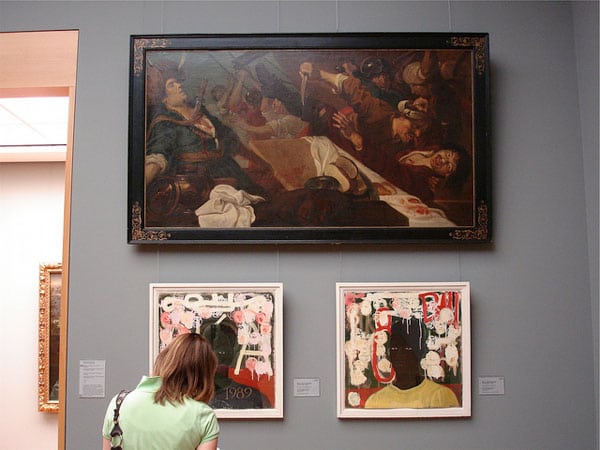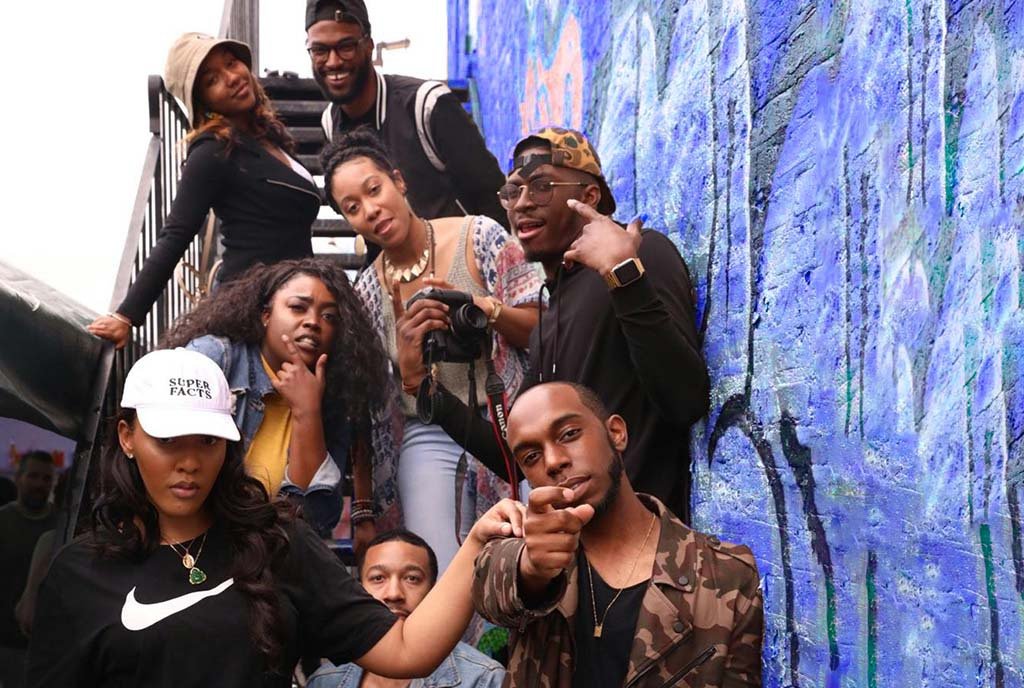
May 25, 2018; New York Times
New York Times art journalist Scott Reyburn recently published a piece entitled, “Auction Buyers Are Catching on to African-American Art.” Blind spots and cultural assumptions are as rampant in the article as in its title, demonstrating that, despite the chatter in recent years, there are important unheard conversations blocking the art world’s progress toward equitable representation.
The frame with which Reyburn approaches the article reinforces the high end art world as “white space,” which NPQ’s Cyndi Suarez profiled earlier this week. Black people in white spaces are repeatedly called upon to pass inspection or prove themselves the equals of their white peers, whose value and right to belong are assumed. Rather than celebrating the success of Black artists or discussing the context in which they work, Reyburn tries to prop the sale of Kerry James Marshall’s Past Times against the historic success of white painters, which is comparatively large enough to crush it.
Value in the art world is determined in part by cultural context; the work is worth what someone will pay for it. Curators, auctioneers, and museum directors therefore have outsized power in setting the value of a work through the conversations they have in public arenas like the pages of the New York Times.
Notably, in this article about Black artists, Reyman quotes almost exclusively white male curators of museums with entirely white boards. Mark Godfrey, senior curator of international art at Tate Modern, said, “We learn that Jack Whitten was as important to Bradford as Jacques de la Villeglé, or that Charles White was as significant for Marshall as Velazquez,” as if the idea that Black artists would be as inspirational as their white peers is somehow revelatory.
Todd Levin, a private dealer and adviser based in New York, said, “Finally African-American artists are regarded as having the same historical value and price points as their peers.” The unnamed actors in this sentence doing the regarding come from the white-dominated field of curators and auctioneers, whose position of power is so entrenched that Reyman can assume we know who they are. Others who might already appreciate the historical value of artists like Marshall, such as the communities of color that he paints, are discursively excluded from this position of authority.
Sign up for our free newsletters
Subscribe to NPQ's newsletters to have our top stories delivered directly to your inbox.
By signing up, you agree to our privacy policy and terms of use, and to receive messages from NPQ and our partners.
An NPR article from 2017 quoted Marshall himself about the rising prominence of his works.
What you’re trying to create is a certain kind of an indispensable presence. Where your position in the narrative is not contingent on whether somebody likes you, or somebody knows you, or somebody’s a friend, or somebody’s being generous to you. But you want a presence in the narrative that’s not negotiable, that’s undeniable.
That kind of position requires more than a few record-breaking auctions; it requires examining sources of power and cultural value with an equity lens. NPQ has repeatedly covered the lack of diversity in museum leadership, which contributes to the overall devaluation of art by people of color.
It’s worth noting, too, that the prices quoted in this article as record-breaking for Black artists are nowhere near the record prices for the white artists mentioned as peers. Marshall’s Past Times sold for $21.1 million, but works by Lichtenstein, Warhol, and Pollock, whom Godfrey mentions as peers, have all sold for three or four times that amount. Reyman does not note this. Marshall is no upstart; he has been exhibiting since 1979 and is the recipient of a MacArthur grant, a Yale University fellowship, and nearly a dozen other grants and fellowships.
Questions of power and equity in society are partly decided by who gets to be in the room, who decides what’s relevant, and whose works are the standard against which others are measured. On all these counts, Reyman constructs high walls around the white space of the art world.—Erin Rubin













